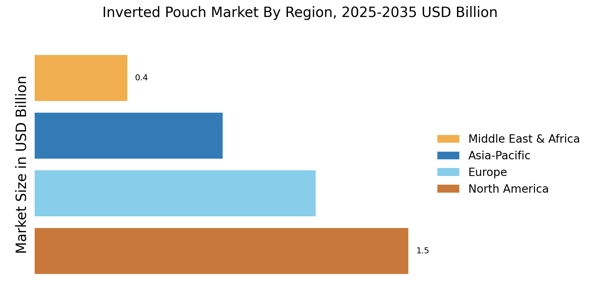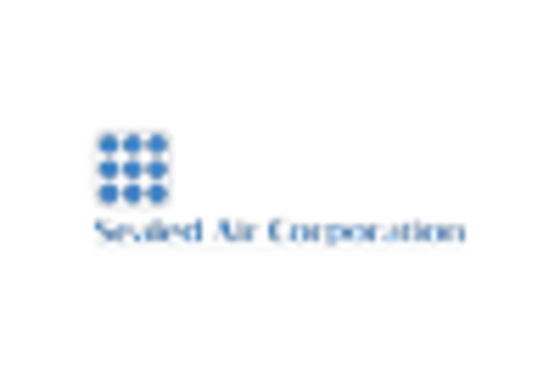Health and Wellness Trends
The growing emphasis on health and wellness is shaping the Inverted Pouch Market, as consumers increasingly seek products that align with their health-conscious lifestyles. This trend is particularly evident in the food and beverage sector, where inverted pouches are being utilized for packaging organic, natural, and functional products. The market for health-oriented food products is projected to reach USD 300 billion by 2026, indicating a robust demand for convenient and healthy packaging options. Inverted pouches offer an ideal solution, as they can effectively preserve the freshness and nutritional value of products. Consequently, manufacturers in the Inverted Pouch Market are likely to focus on developing packaging that caters to this health-centric consumer base, thereby enhancing their market presence.
Sustainability Initiatives
Sustainability has become a pivotal driver in the Inverted Pouch Market, as both consumers and manufacturers prioritize eco-friendly packaging solutions. The shift towards sustainable materials is evident, with many companies exploring biodegradable and recyclable options for their inverted pouches. Recent statistics indicate that the market for sustainable packaging is expected to reach USD 500 billion by 2027, reflecting a growing awareness of environmental issues. This trend is compelling manufacturers to adapt their production processes and materials to align with sustainability goals. Consequently, the Inverted Pouch Market is likely to see an increase in the adoption of innovative materials that reduce environmental impact while maintaining product integrity and shelf life.
Growth of E-commerce and Online Retail
The rise of e-commerce has had a profound impact on the Inverted Pouch Market, as online shopping continues to gain popularity among consumers. The convenience of purchasing products online has led to an increase in demand for packaging that is not only visually appealing but also functional for shipping. Inverted pouches, with their lightweight and space-efficient design, are particularly well-suited for e-commerce applications. Recent data suggests that the e-commerce sector is expected to grow by 20% annually, further driving the need for innovative packaging solutions. As a result, manufacturers in the Inverted Pouch Market are focusing on creating packaging that meets the specific requirements of online retail, ensuring that products arrive safely and attractively.
Technological Innovations in Packaging
Technological advancements are significantly influencing the Inverted Pouch Market, as innovations in packaging technology enhance product functionality and consumer appeal. Developments such as improved sealing techniques, advanced barrier properties, and smart packaging solutions are becoming increasingly prevalent. These innovations not only extend the shelf life of products but also improve the overall user experience. For instance, the integration of QR codes and augmented reality features in packaging is gaining traction, allowing consumers to engage with products in new ways. The market for smart packaging is projected to grow at a CAGR of 7.5% over the next few years, indicating a strong trend towards technology-driven solutions in the Inverted Pouch Market.
Rising Demand for Convenience Packaging
The Inverted Pouch Market is experiencing a notable increase in demand for convenience packaging solutions. Consumers are increasingly seeking products that offer ease of use, portability, and minimal mess. This trend is particularly evident in sectors such as food and personal care, where inverted pouches provide a user-friendly experience. According to recent data, the convenience packaging segment is projected to grow at a compound annual growth rate of approximately 5.2% over the next five years. This growth is likely driven by the busy lifestyles of consumers who prefer packaging that simplifies their daily routines. As a result, manufacturers in the Inverted Pouch Market are innovating to meet these consumer preferences, leading to a wider variety of products that cater to this demand.


















Leave a Comment